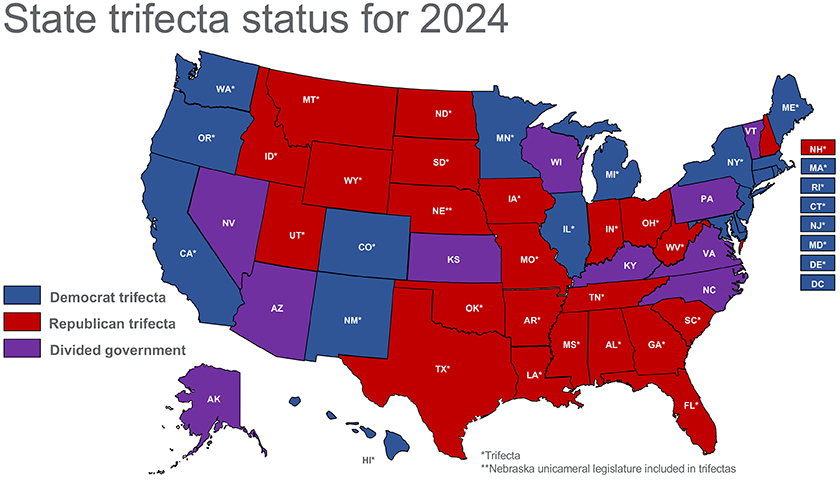There’s more sunshine than clouds over the state tax landscape halfway through 2024. States’ rainy-day funds are at near-historic highs. Authorities are shoring up state revenues through enforcement efforts in lieu of sweeping trends toward tax rate increases or base expansions. And although macroeconomic conditions present uncertainty as usual, resilient consumer trends bode well for sales tax revenues.
“I’m not holding my breath and closing my eyes hoping we get out of 2024,” RSM State and Local Tax Partner Brian Kirkell says with a nod to developments in 2020 that continue to shape state tax dynamics. “I feel like we’re doing all right in 2024.”
Here are 10 observations about state taxes as we move into the second half of the year.
1. State fiscal situations generally are back to normal—and that’s a good thing.
Most states have steadied following three bumpy years. There was the bust of the pandemic, then the boom of federal relief money, followed by significant economic uncertainty.
And now?
“There is a mix of good and bad, but I would argue that’s normal,” Kirkell says. “We should all be happy to see normal. I feel pretty good because the outlook is more predictable than it’s been in years.”
Yearly state revenues have snapped back to pre-pandemic trends, reestablishing a familiarity that eases planning—although overall state tax collections have stagnated more recently.
Also, states’ rainy-day funds are about as well-funded as ever. They amounted to $155 billion in fiscal year 2023, compared to $68 billion in fiscal 2017, according to the National Association of State Budget Officers. That safety net is compelling states to spend.
“When states take money out of reserve, it normally results in either tax cuts, infrastructure spending or something that’s good for business,” Kirkell says.
2. Small or negative real growth in states’ annual revenues could leave states vulnerable.
Calendar year 2023 was a rare down year for overall state and local tax (SALT) collections. Meanwhile, more than a dozen states cut taxes. Many states had sales or gas tax holidays. Some gave income tax rebates. According to the Center on Budget and Policy Priorities, the rate cutting has been historically large in size and scope.
For the wary, this dynamic leaves states susceptible to a variety of potential disruptions.
“States could be put in a tough position if there are some macroeconomic or geopolitical challenges such as rising unemployment or poor market performance—because overall we’re not seeing tax increases,” says Mo Bell-Jacobs, senior manager in RSM’s SALT practice.







